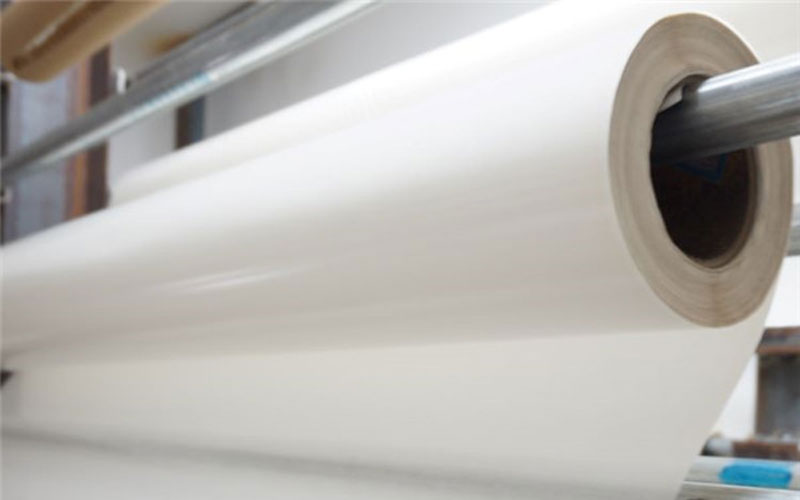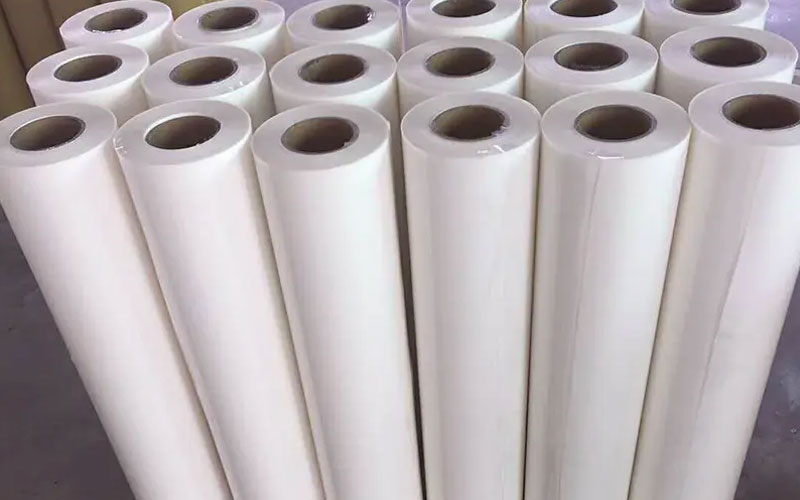Hot melt adhesive film is an important adhesive material in modern industry, and its quality is directly related to the performance and use effect of the product. Therefore, it is crucial for both manufacturing companies and end users to learn to identify the quality of hot melt adhesive films. When choosing hot melt adhesive film, you must pay attention to both price and quality to avoid lowering production efficiency or unstable product performance due to choosing inferior products. The following discusses in detail how to distinguish the quality of hot melt adhesive films from multiple aspects.

1. The influence of raw material purity
The core raw material of hot melt adhesive film is plastic particles, and its quality directly affects the performance of hot melt adhesive film. High-quality hot-melt adhesive films are usually made of 100% virgin plastic particles. These particles, after being processed by scraping or melt-blown processes, can make the hot-melt adhesive film reach the ideal state in terms of viscosity, stability and durability. However, in order to reduce production costs, some manufacturers add second-hand recycled materials, talc or other impurities to the formula. Although this doping behavior can reduce costs, it will significantly weaken the viscosity and overall performance of the hot melt adhesive film.
For example, the viscosity of an 18g hot melt adhesive film made of high-quality raw materials can often exceed the level of 25g inferior products from some manufacturers. This shows that, despite the apparent difference in weight between the two, the purity of the raw material is the key to truly determining the viscosity of the product. Therefore, when choosing a hot melt adhesive film, you can judge its quality by understanding the manufacturer’s raw material sources and production processes.
2. The difference in formula between high viscosity and low viscosity products
The viscosity of the hot melt adhesive film mainly depends on the scientific formula and the purity of the materials used. When most domestic manufacturers, such as Alster, use the same raw materials, the performance difference of their products is usually not too big. However, the proportions of raw materials and types of additives used in the formulation are the main factors that determine viscosity. In the process design of high-viscosity hot-melt adhesive films, we usually pay more attention to the balance of the formula and the high purity of raw materials, while inferior products may make up for the lack of viscosity by increasing the weight or doping with cheap materials.
For application scenarios with higher viscosity requirements, such as high-strength bonding or bonding of complex structural parts, it is particularly important to choose high-quality, high-viscosity hot melt adhesive films. In addition, users can compare the viscosity differences of products from different manufacturers by trying samples to find the product that best suits their needs.

3. Instability of inferior products
In addition to insufficient viscosity, another significant disadvantage of inferior hot melt adhesive films is instability. This instability is mainly reflected in the following aspects:
Viscous fluctuations
Inferior products often have inconsistent viscosity values due to the uneven quality of raw materials. For example, some manufacturers may add 20% recycled content to one batch of products and increase it to 40% for the next batch. Such instability will directly lead to unpredictable performance of the product in actual applications.
Decreased processing performance
Inferior hot melt adhesive films are prone to breakage, warping, or uneven surfaces during processing. These problems will bring additional complexity to the subsequent production process and even lead to substandard finished products.
Differences in usage effects
Inferior products often have the situation that “the sample is easy to use, but the effect is not good in mass production.” This problem may bring huge risks to manufacturing companies, especially in situations where large-scale use of hot melt adhesive films is required.
Therefore, when companies choose hot melt adhesive films, they must not only pay attention to the viscosity value, but also need to understand the stability performance of the product. This can be verified by investigating the manufacturer’s historical records and testing different batches of products.

4. How to choose high-quality hot melt adhesive film
In order to ensure that the selected hot melt adhesive film is of reliable quality, users can start from the following aspects when purchasing:
Inspect manufacturers
Choosing a reputable manufacturer is the first condition to ensure product quality. These manufacturers usually disclose the sources of their raw materials and provide corresponding quality certifications, such as SGS certification.
Pay attention to the raw material description
Ask the manufacturer whether it uses 100% virgin plastic particles and whether it will be adulterated with second-hand recycled materials or additives.
View production process
Understand the production process of hot melt adhesive film, such as whether scraping, melt-blowing and other processes are standardized, and check whether the appearance of the product is smooth and uniform.
Perform a stickiness test
Before purchasing, manufacturers are required to provide samples and test the product’s viscosity, strength and stability through actual use.
Evaluate price reasonableness
Underpriced hot melt adhesive films often mean a compromise in quality. When choosing, users should focus on cost-effectiveness rather than simply pursuing low prices.
Conclusion
The quality of hot melt adhesive film directly affects the bonding effect and production efficiency of the product. Therefore, when choosing a hot melt adhesive film, users need to comprehensively consider factors such as raw material purity, formula design, and product stability. At the same time, through inspection of manufacturer qualifications and product performance testing, unnecessary losses caused by the selection of inferior products can be effectively avoided.
In short, the core of high-quality hot melt adhesive film lies in the honest manufacturing process and the use of high-purity raw materials. Choosing products with reliable quality can not only improve production efficiency, but also reduce system risks and lay a solid foundation for the long-term development of the enterprise.






